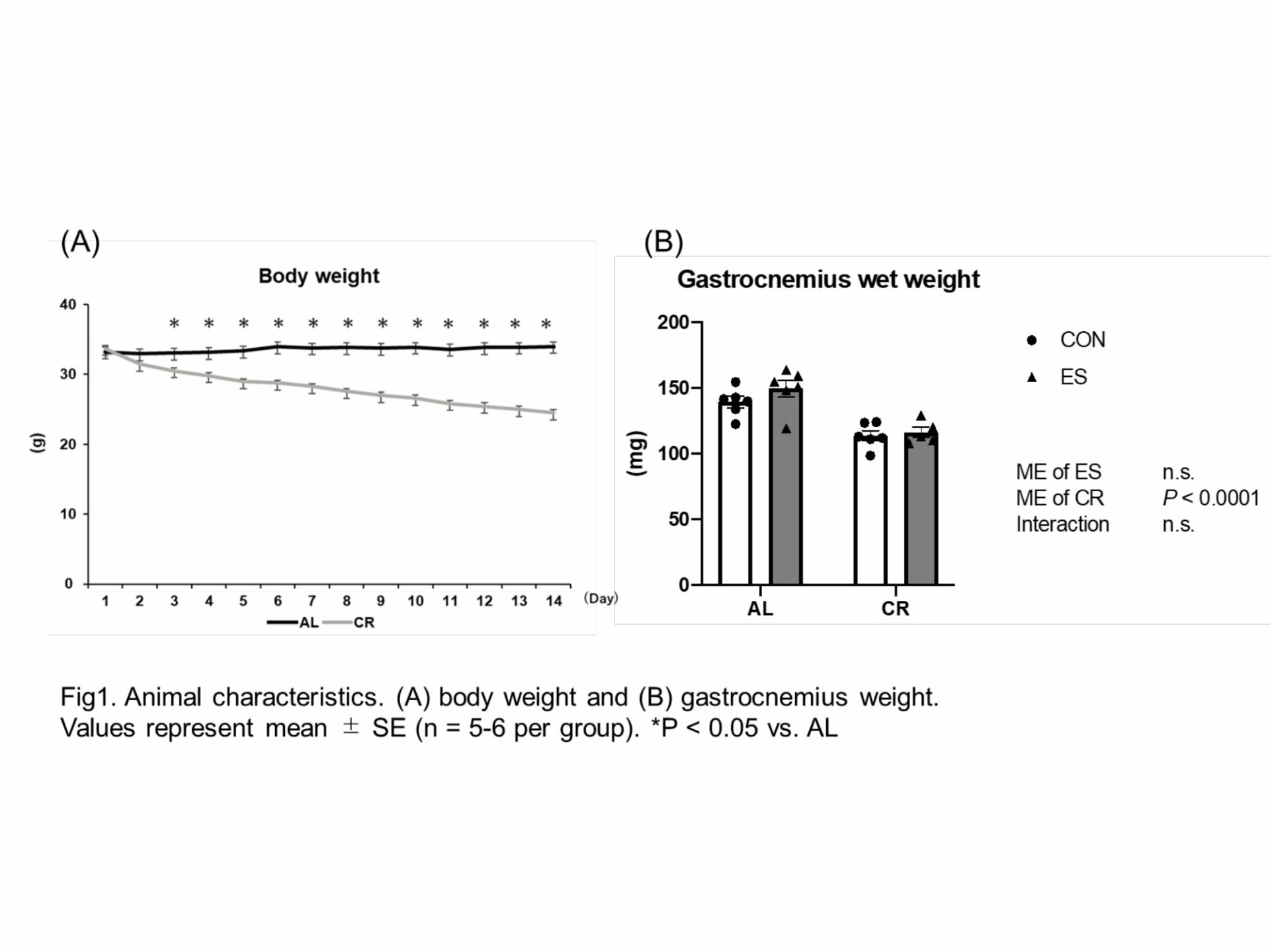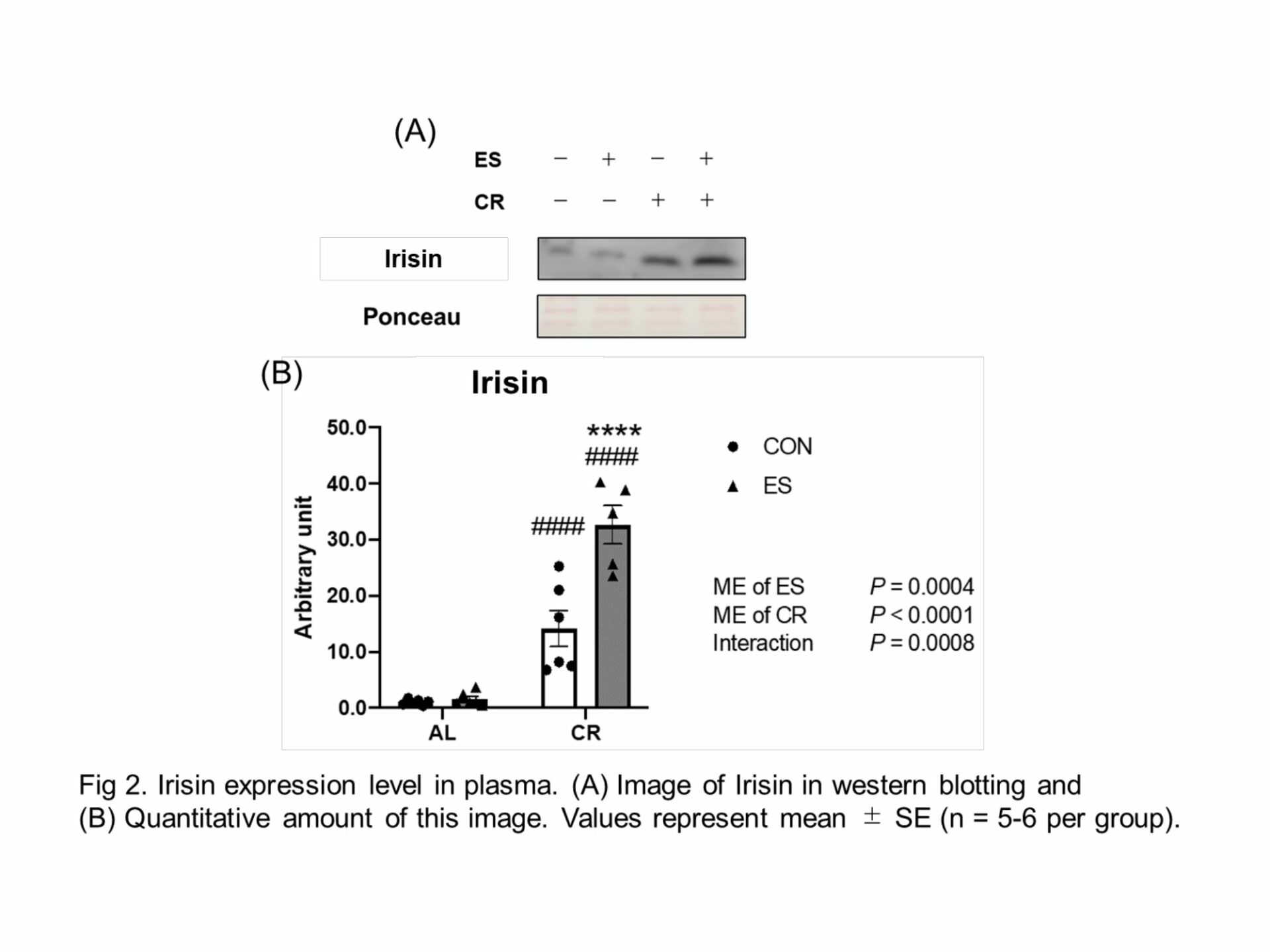Introduction
 It is well known that combining diet and physical activity are more effective for health than interventions of diet or physical activity alone (Faught et al., 2017). Recent research show that skeletal muscle secretes myokines in response to exercise, which contribute to the adaptation of exercise in other organs (Severinsen & Pedersen, 2020). Therefore, we hypothesized that muscle adaptation by calorie restriction (CR) might enhance myokine responses by exercise. We have already reported that Irisin, one of myokines that contributes to metabolic activation of adipose tissue and weight loss, is secreted in response to muscle contraction (Tanimura et al., 2022), and we combined this model with CR in this study.
Objective
The aim of this study was to investigate that effects of muscle contraction and CR on Irisin secretion.
Methods
All the experimental procedures performed in this study were approved by the Institutional Animal Experiment Committee of the University of Tsukuba, Japan (22-397). Male ICR mice aged 7 weeks were used in this study. After 1 week of acclimation, mice in the CR group were given 60% of the average amount of food eaten by each mouse for 1 week acclimation periods. After 2weeks CR or Ad libitum (AL), we conducted electrical stimulation (ES) as a model to induce high intensity muscle contractions (Tanimura et al., 2022). Gastrocnemius muscle and blood were obtained immediately after single bout of ES (n = 5-6 in each groups). We used Western blotting as the method of analysis for protein expressions in skeletal muscle and blood. One-way analysis of variance (ANOVA) or Two-way ANOVA were performed using the GraphPad Prism 8 (GraphPad, Inc.), and significance was set at P < 0.05 for all cases.
Results and Discussion
Body weight and gastrocnemius mass were significantly decreased in CR groups than AL groups (Fig.1). Thus, CR affected not only weight but also muscle condition. Blood Irisin levels were increased by both CR and ES, and an interaction was observed in the CR+ES group (Fig.2). Therefore, CR enhances Irisin secretion by exercise. One of the upstream molecules of Irisin, PGC-1α, may be involved in this interaction.
Conclusion
CR and muscle contraction promote Irisin secretion synergistically.


